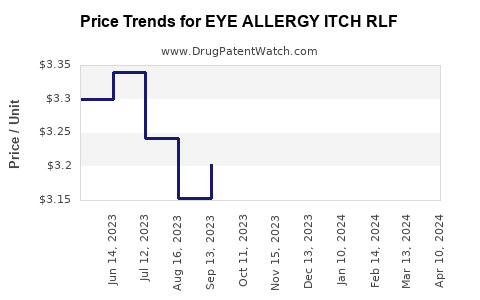Drug Price Trends for EYE ALLERGY ITCH RLF
✉ Email this page to a colleague

Average Pharmacy Cost for EYE ALLERGY ITCH RLF
| Drug Name | NDC | Price/Unit ($) | Unit | Date |
|---|---|---|---|---|
| EYE ALLERGY ITCH RLF 0.2% DROP | 70000-0053-01 | 3.45794 | ML | 2024-11-20 |
| EYE ALLERGY ITCH RLF 0.2% DROP | 70000-0053-01 | 3.00093 | ML | 2024-10-23 |
| EYE ALLERGY ITCH RLF 0.2% DROP | 70000-0053-01 | 3.15143 | ML | 2024-09-18 |
| EYE ALLERGY ITCH RLF 0.2% DROP | 70000-0053-01 | 3.69020 | ML | 2024-08-21 |
| EYE ALLERGY ITCH RLF 0.2% DROP | 70000-0053-01 | 3.01766 | ML | 2024-07-17 |
| EYE ALLERGY ITCH RLF 0.2% DROP | 70000-0053-01 | 3.35477 | ML | 2024-06-19 |
| >Drug Name | >NDC | >Price/Unit ($) | >Unit | >Date |


